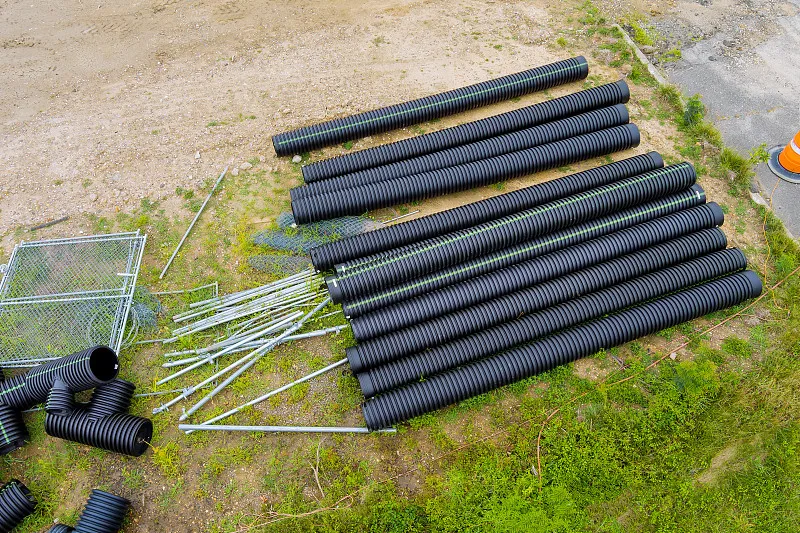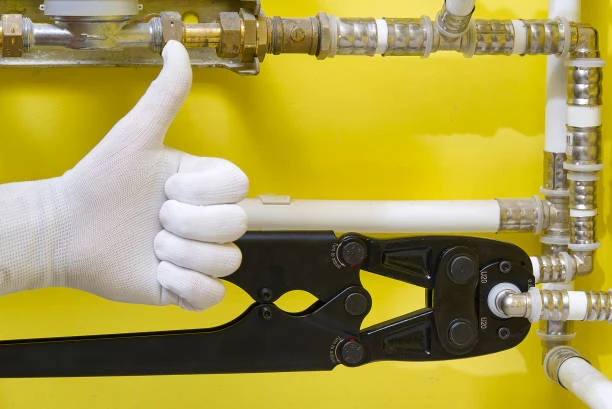Introduction PPR Pipe
The construction industry has witnesse rapid growth in the use of PPR (Polypropylene Random Copolymer) pipes, particularly in residential and commercial infrastructure projects. Known for their durability, corrosion resistance, and cost-effectiveness, PPR Pipe are widely use for water and heating systems. China, as the world’s manufacturing hub, has played a significant role in the production and distribution of these pipes globally. However, in recent times, many investors are starting to shy away from PPR pipe deals in China. What has caused this shift in sentiment, and what does it mean for the global market?
What Are PPR Pipe?
PPR pipes are a type of plastic pipe made from polypropylene random copolymer, a material known for its excellent thermal stability and resistance to chemicals and abrasion. These pipes are often used in plumbing systems for both hot and cold water, as well as in industrial and agricultural applications. The major benefits of PPR pipes include:
- Durability: PPR pipes are resistant to wear and tear, making them long-lasting in various environmental conditions.
- Corrosion Resistance: Unlike metal pipes, PPR pipes do not corrode over time, which helps avoid issues like rust and scale buildup.
- Ease of Installation: They are lightweight, easy to handle, and require less effort for installation compared to traditional metal pipes.
- Environmental Friendliness: PPR pipes are 100% recyclable, contributing to sustainability in the construction industry.
The Current State of PPR Pipe Industry in China
China has long been a dominant player in the global PPR pipe industry, with an extensive manufacturing base that caters not only to domestic demand but also to international markets. Over the past decade, the PPR pipe market in China has grown significantly due to the increasing demand for construction materials and infrastructure development.
However, this growth has led to an influx of local manufacturers, making the market highly competitive. Chinese PPR pipes are often seen as more affordable compared to their counterparts from other countries, which has allowed China to capture a significant share of the global market. Despite this success, the industry faces a variety of challenges, many of which have led to investor hesitation in recent times.
Challenges Facing PPR Pipe Deals in China
There are several key challenges contributing to the hesitation of investors regarding PPR pipe deals in China:
- Economic Slowdowns: China’s economy has shown signs of slowing down, which has affected the construction sector. As the real estate market stagnates and infrastructure projects decrease, the demand for PPR pipes has also faced pressure. Economic uncertainties make it harder for investors to project future returns, making them hesitant to commit to new projects.
- Regulatory Hurdles: The Chinese government has implemented stricter regulations on the construction industry in recent years, including tighter environmental standards and stricter product quality checks. While these regulations are intended to improve the industry, they also increase the cost of compliance and add complexity for investors.
- Overcapacity in the Industry: The rapid expansion of the PPR pipe market in China has led to overcapacity in the sector. There are now more manufacturers than the market can sustain, resulting in price wars and lower profit margins. This overcapacity has created a less favorable investment climate for new entrants.
Why Are Investors Shying Away from PPR Pipe Deals?
So, why are investors pulling back from PPR pipe deals in China? There are several key reasons driving this trend:
- Intense Competition: The rise in the number of PPR pipe manufacturers has made it increasingly difficult for companies to stand out in the market. With so many players competing for market share, investors are finding it harder to achieve the high returns they once anticipated.
- Market Volatility: The construction market in China has become highly volatile. Economic instability, changing government policies, and fluctuating demand for construction materials make it challenging to predict the future growth of the PPR pipe industry.
- Quality Control Issues: China has faced ongoing issues with product quality, including the production of counterfeit PPR pipes and substandard materials. These issues can damage the reputation of manufacturers and erode consumer trust, which in turn makes investors wary.
- Trade Tensions: Trade tensions, particularly between China and Western countries, have added another layer of uncertainty for international investors. Tariffs and trade restrictions make it more difficult for Chinese manufacturers to access global markets, reducing the potential profitability of investments in the PPR pipe sector.
Impact of PPR Pipe Deal Challenges on the Global Market
The challenges facing PPR pipe deals in China have far-reaching effects on the global market. International investors who were once attracted to China’s low manufacturing costs and large-scale production capabilities are now reconsidering their positions. As a result, many are looking to alternative markets for investment opportunities.
China’s reduced output of PPR pipes could also lead to a shortage of these products in global markets. Countries that rely on Chinese exports may experience price increases, or they may turn to other manufacturers to meet their needs.

The Role of Government Regulations in Shaping Investor Sentiment
Government regulations play a significant role in shaping the investment climate. In China, the government’s focus on environmental sustainability and product quality has led to stricter oversight in the PPR pipe industry. While these regulations aim to ensure that the market produces high-quality products, they have also raised costs for manufacturers and created more barriers to entry for investors.
Additionally, international trade policies and tariffs have had a profound impact on China’s export-oriented industries. Anti-dumping measures and trade restrictions can reduce the attractiveness of Chinese manufacturing, pushing investors toward markets with more stable regulatory environments.
What Investors Should Consider Before Entering the Chinese Market
Investors looking to enter the Chinese PPR pipe market should carefully evaluate the risks involved. Key factors to consider include:
- Economic Stability: Investors should assess the overall economic conditions in China and how they might affect the construction industry and, by extension, the PPR pipe market.
- Regulatory Environment: Staying informed about changes in government regulations and tariffs is crucial for investors. Partnering with local experts can help navigate these complexities.
- Quality Control: Ensuring that manufacturers adhere to international quality standards is vital. Investors should conduct thorough due diligence to avoid issues with counterfeit or substandard products.
Alternative Markets for PPR Pipe Investment
While China has been a dominant player in the PPR pipe market, other regions are emerging as viable alternatives for investment. Southeast Asia, for example, is seeing rapid growth in infrastructure development, which is driving demand for PPR pipes. Africa and Latin America also present untapped opportunities for expansion.
Future Outlook for PPR Pipes in China
Despite the challenges currently facing the Chinese PPR pipe market, there are still opportunities for growth. As the government continues to prioritize infrastructure projects and environmental sustainability, the demand for high-quality, durable pipes will likely rise in the long term. Investors willing to navigate the current uncertainties may find opportunities in specialized niches, such as eco-friendly and innovative pipe solutions.
Conclusion
In conclusion, while the PPR pipe market in China has been a significant player on the global stage, it is currently facing a range of challenges that have made investors wary. Economic slowdowns, regulatory hurdles, overcapacity, and trade tensions have all contributed to this shift in sentiment. However, with the right strategies and due diligence, there may still be potential for investors to profit in this evolving market.
FAQs
- What are PPR pipes used for? PPR pipes are mainly used in plumbing systems for hot and cold water, as well as in heating systems and industrial applications.
- Why are PPR pipes preferred over other types of pipes? PPR pipes are durable, resistant to corrosion, and cost-effective, making them a popular choice for construction projects.
- What challenges do investors face in China’s PPR pipe market? Challenges include economic slowdown, intense competition, quality control issues, and trade tensions.
- Which countries are alternatives for PPR pipe investments? Southeast Asia, Africa, and Latin America are emerging markets for PPR pipe investments.
- Is the PPR pipe market in China expected to recover? While the market is facing challenges, long-term growth opportunities exist, particularly in the eco-friendly and innovative product segments.

















